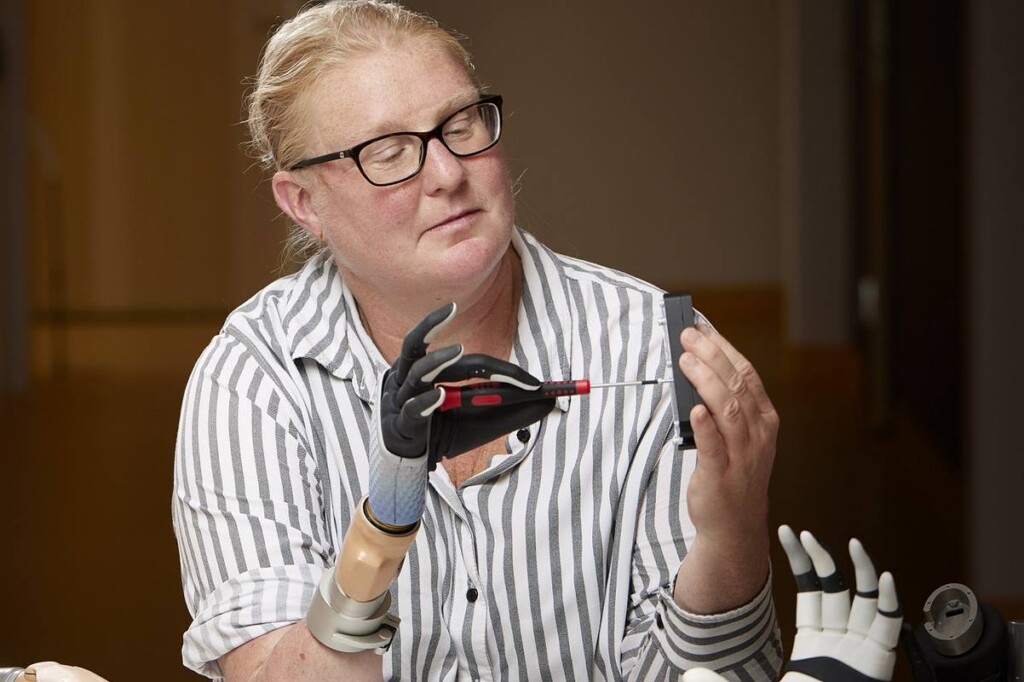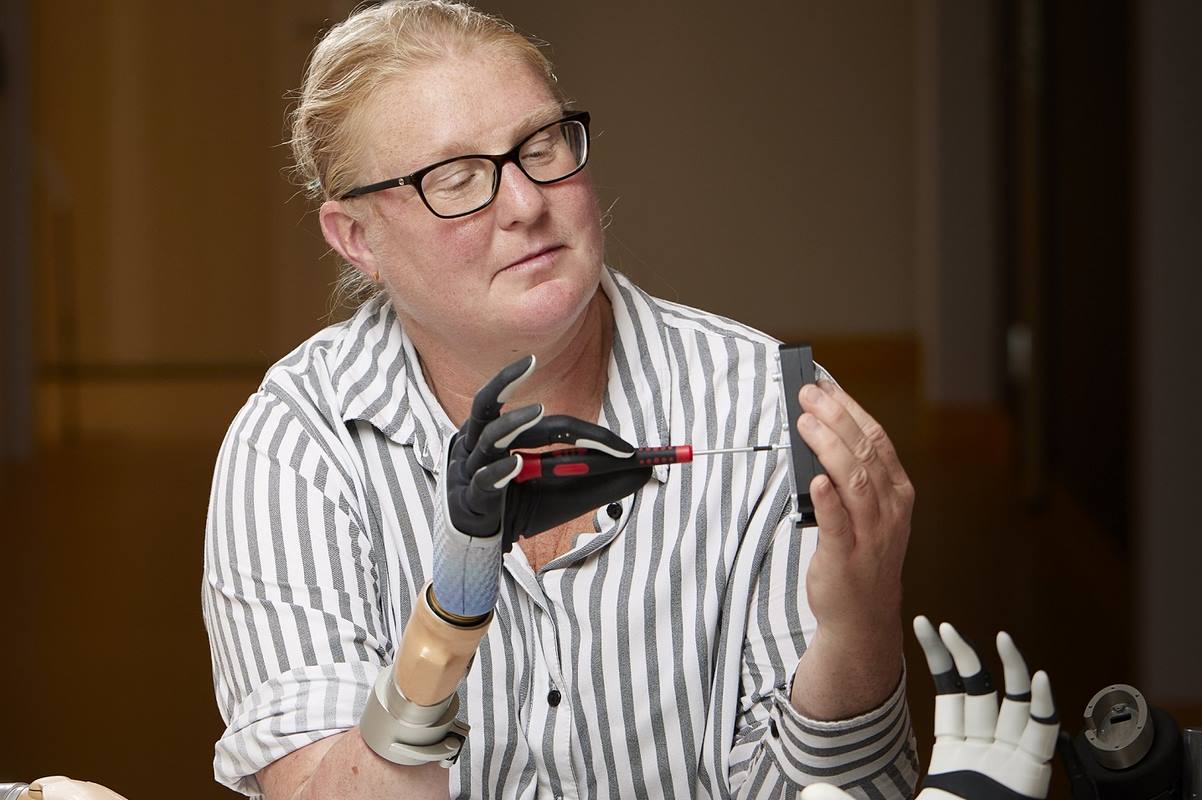
A Swedish woman named Karin has become the first person to ever receive a below-the-elbow prosthetic that fuses bone with metal and electrodes.
An incredible feat of robotics and biology, it’s seen to represent an eventual gold standard of prosthetics and has encouraged the interdisciplinary science team to believe it will be available to other amputees in other circumstances in the future.
Mechanical attachment and reliable control of prosthetic limbs are two of the biggest obstacles in artificial limb replacement, with many amputees opting to reject even the most sophisticated, commercially available artificial limbs due to fears of painful and uncomfortable attachment and limited, unreliable control.
Karin lost her right arm in a farming machinery accident 20 years ago and was one of those who decided against existing prostheses
A multidisciplinary group of engineers and surgeons from Sweden, Australia, and Italy aimed to solve these problems by developing a remarkable interface that fuses human and machine to allow the limb to be comfortably attached whilst enabling electrical connection with the nervous system.
Called ‘osseointegration,’ it’s a process where bone tissue embraces titanium creating a strong mechanical bond and enabling connection with the nervous system via electrodes implanted in the nerves and muscles.
Karin, an engineer, says her groundbreaking bionic arm has reduced the terrible phantom pain she used to feel, and has been ‘life-changing’ in returning her capabilities in everyday life and regaining her independence.
In the years following her accident, she endured excruciating phantom limb pain and found that existing, conventional prosthetic limbs were of little help in daily life, as well as being uncomfortable.
“It felt like I constantly had my hand in a meat grinder, which created a high level of stress and I had to take high doses of various painkillers,” she said. “I now have better control over my prosthesis, but above all, my pain has decreased.”
The surgery was done in December 2018, and she started using the arm in mid-2019.
Lead researcher Dr. Max Ortiz Catalan, head of neural prosthetics research at the Bionics Institute in Australia, as well as the Center for Bionics and Pain Research in Sweden, explained that the fact Karin has been able to use her bionic limb for a number of years was very encouraging.
“Karin was the first person with below-elbow amputation who received this new concept of a highly integrated bionic hand that can be used independently and reliably in daily life,” said Dr. Ortiz Catalán. “Karin is now using somewhat the same neural resources to control the prosthesis as she did for her missing biological hand.”
“The fact that she has been able to use her prosthesis comfortably and effectively in daily activities for years is a promising testament to the potential life-changing capabilities of this novel technology for individuals facing limb loss,” he added.
The main challenges facing the researchers at this level of amputation were the two bones—the radius and ulna—that should be aligned and loaded equally, and the fact that not much space is available for implanted and prosthetic components.
However, the team managed to develop a suitable neuro-musculoskeletal implant that allows connections between the user’s nervous system and the electronic control system of the bionic limb, which Dr. Ortiz Catalán says is responsible for the reduction in pain.
PROSTHETICS HIGHER UP: Implanted Electrodes Could Offer Improved Vision for 148 Million Blind People
“The below elbow amputation level has particular challenges, and the level of functionality achieved marks an important milestone for the field of advanced extremity reconstructions as a whole,” said Professor Rickard Brånemark, associate professor at Gothenburg University in Sweden, and associate researcher at MIT.
“By combining osseointegration with reconstructive surgery, implanted electrodes, and AI, we can restore human function in an unprecedented way.”
The nerves and muscles in the residual limb were re-arranged to provide more sources of motor control information to the prosthesis, a complicated surgery done at the Sahlgrenska University Hospital in Sweden by Dr. Paolo Sassu, who previously became the first surgeon to conduct a successful hand transplant in Scandinavia.
OTHER GREAT PROSTHETICS RESEARCHERS: This Man Learned Robotics on YouTube, Now He’s Creating Affordable 3D Prosthetics For Others—WATCH
As joyous as the researchers are for what this does to advance the science of their various fields, Karin says the robotic limb has improved her functionality, increased her independence, and, due to the highly advanced integration between her residual limb and her bionic one, has also massively relieved her pain.
“Today, I need much less medication. For me, this research has meant a lot, as it has given me a better life.”
SHARE This Medical Triumph With Your Friends…




















